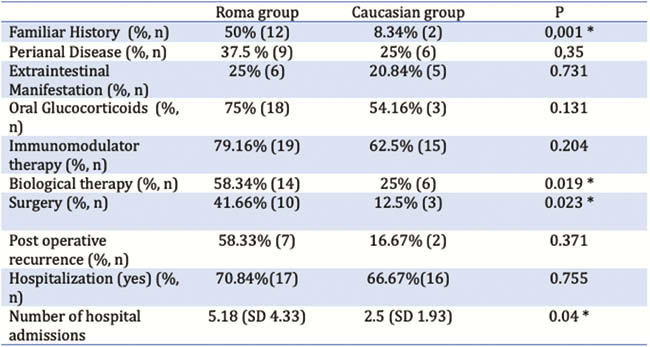P292 Inflammatory bowel disease and their implications in Roma ethnicity: A preliminary study
B. Castro1, M.J. García García1, M. Pascual1, J.L. Fernández-Forcelledo2, J. Crespo1, M. Rivero1
1Marqués de Valdecilla University Hospital, Gastroenterology, Santander- Cantabria, Spain, 2Sierrallana Hospital, Gastroenterology, Torrelavega-Cantabria, Spain
Background
The pathogenesis of inflammatory bowel disease (IBD) is multifactorial and many factors have been involved such as genetic or environmental elements. The characteristics of IBD in different ethnic groups have been investigated to clarify the North-South gradient. We considered that Roma patients seem to have a more aggressive disease than Caucasian patients but no data to support this feeling is published. For this reason, the aim of our study is to analyse clinical characteristics of our cohort of IBD patients comparing Roma and Caucasian ethnicity
Methods
A retrospective cohort study was realised in both IBD Units to compare Roma and Caucasian groups. IBD patients were identified in the outpatient clinic. Demographical, clinical characteristics, pharmaceutical requirements and surgeries were collected. This group was matched by age, gender, disease and location of IBD with Caucasian patients.
Results
24 Roma patients were identified in our cohort. The prevalence of Gypsy ethnic group in our cohort was 1.66%. A percentage of 41.67% were men (

Conclusion
In our cohort, the Roma IBD patients showed more familial aggregation than the Caucasian group. An aggressive disease was also found in Roma patients and the subsequent increase in biological therapy, hospital admissions and surgical procedures to control the disease. Future studies should be performing to investigate genetic or environmental factors associated with this ethnic group.


